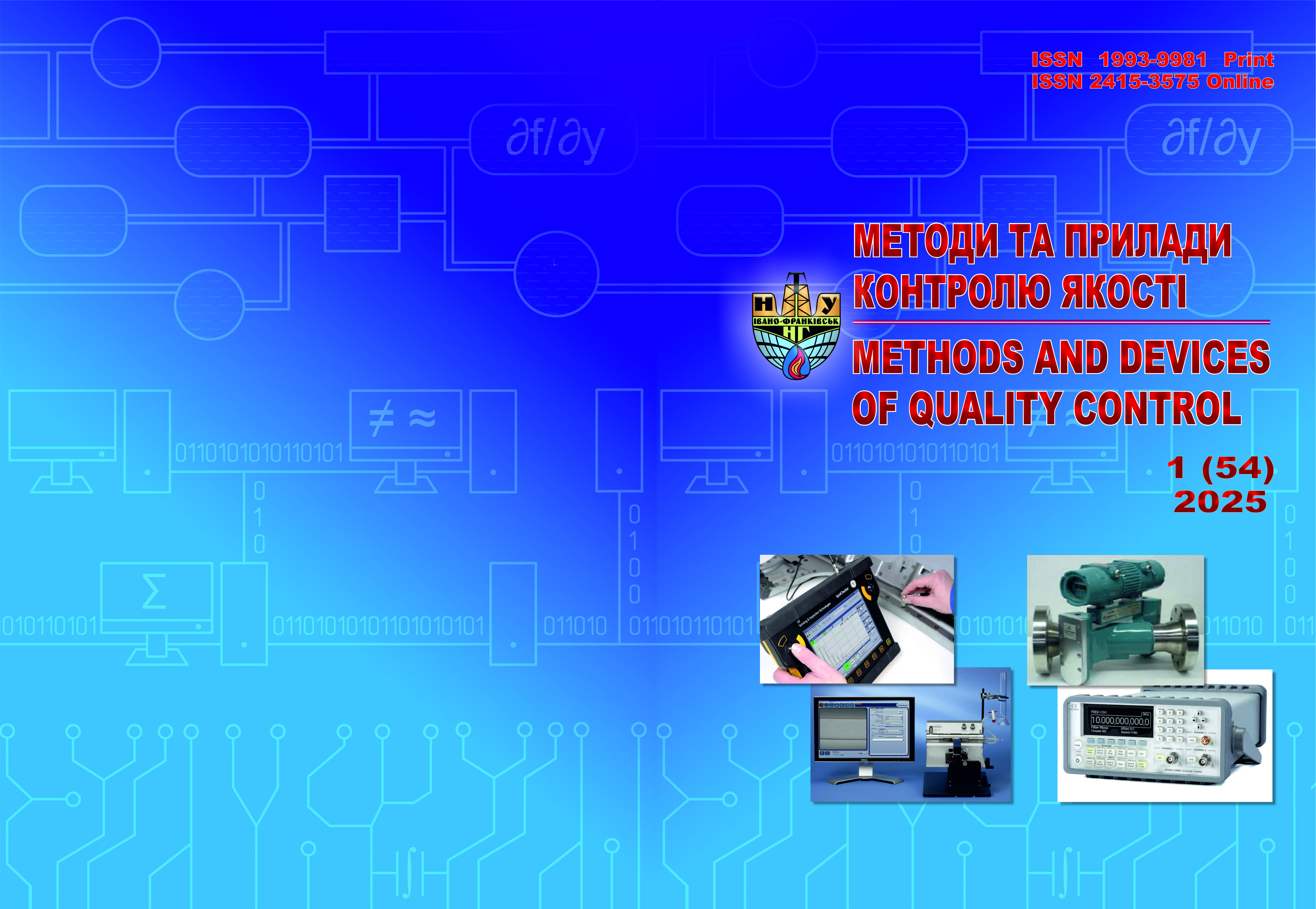МОЖЛИВОСТІ ТА ПЕРСПЕКТИВИ МОДИФІКАЦІЇ МЕТОДИКИ ТРИВИМІРНОГО МОДЕЛЮВАННЯ МІКРОСТРУКТУРИ
DOI:
https://doi.org/10.31471/1993-9981-2025-1(54)-29-36Ключові слова:
мікроструктура, тривимірне моделювання, методика, комп'ютерна обробка, алгоритм.Анотація
Запропонована методика тривимірного моделювання мікроструктури матеріалів базується на серійному аналізі зображень, отриманих у процесі пошарового полірування. Метод дозволяє створювати реалістичні 3D-моделі мікроструктури, усуваючи обмеження традиційної металографії та доповнюючи можливості чисельного моделювання. У статті здійснено порівняння існуючих методів прогнозування фазового складу та механічних властивостей, зокрема CALPHAD, FEM та Molecular Dynamics, висвітлено їхні переваги та недоліки. Запропонований підхід дозволяє отримувати точну просторову інформацію про частинки матеріалу, що особливо актуально для аналізу структурних дефектів, розподілу фаз та контролю якості. Визначено перспективні напрями вдосконалення: автоматизація алгоритму, розширення функціональності за допомогою машинного навчання та розрахунок похибок вимірювання. Одержані результати демонструють потенціал запропонованого методу для дослідження реальних матеріалів, їхньої структури та експлуатаційних характеристик.
Завантаження
Посилання
Wang W., Li Z. CALPHAD as a Toolbox to Facilitate the Development of HEAs. IntechOpen. 2023. doi: 10.5772/intechopen.105191
Palumbo M., Dematteis E. M., Fenocchio L. et al. Advances in CALPHAD Methodology for Modeling Hydrides: A Comprehensive Review. J. Phase Equilib. Diffus. 2024. Vol. 45. P. 273–289. doi: 10.1007/s11669-024-01113-y
CALPHAD Methodology - Thermo-Calc Software. Thermo-Calc Software. 2025. URL: https://thermocalc.com/about-us/methodology/the-calphad-methodology
Gorsse S., Senkov O. N. About the Reliability of CALPHAD Predictions in Multicomponent Systems. Entropy. 2018. Vol. 20. P. 899. doi: 10.3390/e20120899
Factors Affecting Phase Changes. Solubility of Things. URL: https://www.solubilityofthings.com/factors-affecting-phase-changes
Khan M. U., Soomro S. A., Jahanger M. I. et al. Factors influencing synthesis and properties of MAX phases. Sci. China Mater. 2024. Vol. 67. P. 3427–3455. doi: 10.1007/s40843-024-3073-7
Armstrong R. W. Size effects on material yield strength, deformation, and fracturing properties. Journal of Materials Research. 2019. Vol. 34. No. 13. P. 2161-2176. doi: 10.1557/jmr.2018.406
Song Y., Wu W., Yu Y. et al. Effects of Electric and Magnetic Treatments on Microstructures of Solid Metals: A Review. Chin. J. Mech. Eng. 2023. Vol. 36. P. 139. doi: 10.1186/s10033-023-00961-y
Tian G., Mao B., Xu Y. et al. Investigation on gradual degradation of mechanical property and microstructure in 9% Cr heat-resistant steels via interrupted creep test. J. Mater. Sci. 2023. Vol. 58. P. 4637–4656. doi: 10.1007/s10853-023-08296-8
Soni S., Khan A. H., Khare G. A Comprehensive Review on Current Trends, Applications and Future Directions of Finite Element Methods. Journal of Emerging Technologies and Innovative Research. 2023. Vol. 10. No. 8. URL: https://www.jetir.org/papers/JETIR2308450.pdf
Berendsen H. J. C. Molecular dynamics simulations: The limits and beyond. Computational Molecular Dynamics: Challenges, Methods, Ideas. SpringerLink. 1998. P. 3–36. URL: https://link.springer.com/chapter/10.1007/978-3-642-58360-5_1
Kyratsis P., Tzotzis A., Davim J. P. A Comparative Study Between 2D and 3D Finite Element Methods in Machining. In: 3D FEA Simulations in Machining. Springer, Cham. 2023. P. 1–12. doi: 10.1007/978-3-031-24038-6_1
Casalini T., Limongelli V., Schmutz M. et al. Molecular modeling for nanomaterial–biology interactions: Opportunities, challenges, and perspectives. Frontiers in Bioengineering and Biotechnology. 2019. Vol. 7. P. 1-14. doi: 10.3389/fbioe.2019.00268
Gokhale A. M., Singh H., Mao Y. et al. Three-Dimensional Metallography for Visualization, Characterization, Modeling, and Simulation of Three-Dimensional Microstructures. Microscopy and Microanalysis. 2010. Vol. 16. P. 714–715. doi: 10.1017/S1431927610063105
Harmon J. E. Mashynne navchannia dlia kharakterystyky 3D mikrostruktury v realnomu chasi // Argonne National Laboratory. 2020. URL: https://www.anl.gov/article/capturing-3d-microstructures-in-real-time [in Ukrainian]
Alrfou K., Zhao T., Kordijazi A. Deep Learning Methods for Microstructural Image Analysis: The State-of-the-Art and Future Perspectives. Integrating Materials and Manufacturing Innovation. 2024. Vol. 13. P. 703–731. doi: 10.1007/s40192-024-00369-z
Shang X., Liu Z., Zhang J. et al. Tailoring the mechanical properties of 3D microstructures: a deep learning and genetic algorithm inverse optimization framework. arXiv. 2023. URL: https://arxiv.org/pdf/2305.05634v3
Ivanov O. O., Prysiazhniuk P. M., Bodrova L. G. et al. 3D Modeling of the Structure of Deposited Materials Based on Fe–Ti–Mo–B–C System. Mater. Sci. 2023. Vol. 59. P. 163–169. doi: 10.1007/s11003-024-00758-x
Ivanov O., Karpash M., Petryna D. et al. Experimental approbation of the algorithm for obtaining 3D model of hardfacing material phase particle. Procedia Structural Integrity. 2024. Vol. 59. P. 330–336. doi: 10.1016/j.prostr.2024.04.047


.png)




